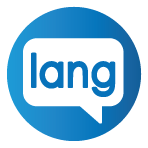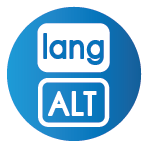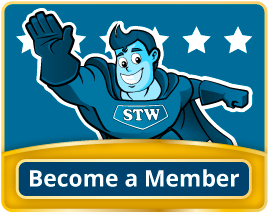3rd Grade Common Core: RI.3.4
Common Core Identifier: RI.3.4 / Grade: 3
Curriculum: Reading Informational: Craft and Structure
Detail: Determine the meaning of general academic and domain-specific words and phrases in a text relevant to a grade 3 topic or subject area.
50 Common Core State Standards (CCSS) aligned worksheets found:
The bold colors of a Monarch butterfly serve as a warning symbol to predators. Learn about this fascinating insect and its life cycle.
Level:
Filing Cabinet
Logged in members can use the Super Teacher Worksheets filing cabinet to save their favorite worksheets.
Quickly access your most used files AND your custom generated worksheets!
Please login to your account or become a member and join our community today to utilize this helpful feature.
Read about the many different habitats found within a mountain ecosystem.
Level:
The history of piggy banks and how today's popular design was actually a mistake.
Level:
Why does a camel have humps? It's not to store water, but rather to store fat. Separate camel facts from fiction with this article.
Level:
Learn about the many unique moons of our solar system. (approx. 3rd grade level)
Level:
Find out how pattern camouflage, color camouflage, and mimicry can benefit predators and prey.
Level:
Learn dozens of fascinating facts about giraffes, then answer the comprehension questions.
Level:
Keep a record of your family's expenses for one week and group them according to needs and wants.
Level:
Find out how energy from the sun can create electricity. This passage is written at a 3rd grade reading level.
Level:
The way the earth's rotation and revolution interact with the sun means night can sometimes last 24 hours in some places! This short article helps explain the fascinating phenomenon to students.
Level:
This short passage about squirrels is written at a third-grade level and features questions to test students' understanding of the text.
Level:
Readers of this passage will learn the differences between two animals that look very similar--snakes and glass lizards. Then they'll answer comprehension questions, complete a crossword, and follow a writing prompt.
Level:
Read about this cool landmark in southeast Tennessee. Then answer the questions that follow.
Level:
Print out this cute story for your students to read and respond to. The worksheet includes comprehension questions, a vocab activity, and a writing prompt.
Level:
On this cut-and-paste t-chart, students tell whether each item is a body of water or a landform.
Level:
This article compares and contrasts river hippos and pygmy hippos. Students can read the article and then answer several reading comprehension questions, complete a vocabulary activity, and respond to a writing prompt.
Level:
This entertaining poem about staying up all night is a great way to introduce students to poetry. The worksheet includes three questions for students to answer.
Level:
Your students can read this short article about animal tails and answer the comprehension questions that follow.
Level:
This short article about dandelions gives an informative overview of the plant's life cycle. After reading the passage, students will answer three reading comprehension questions.
Level:
This short passage is all about the Mall of America in Bloomington, Minnesota. It has facts about the mall's size, the things you can do there, and more!
Level:
Read up on West Virginia's first and only national park. This hidden gem is home to one of the oldest rivers on the planet!
Level:
Use the word bank and clues to solve this engaging crossword puzzle. Want to make it a little more challenging? Don't use the word bank.
Level:
This short reading comprehension passage gives an overview of gladiators in ancient Rome and includes 5 follow-up questions.
Level:
This third-grade level reading comprehension passage describes some of the differences between tortoises and turtles. Students will read it and be able to answer several questions, complete a vocab activity, and respond to a writing prompt.
Level:
Read all about the dairy capital of the United States: Wisconsin! Then answer a series of reading comprehension questions, a vocabulary activity, and a writing prompt.
Level:
This article about the pronghorn gives information about these fast animals. The article is accompanied by reading comprehension questions, a vocabulary activity, and a writing prompt.
Level:
Have your students read this short passage on apple trees and answer the reading comprehension questions that go with it.
Level:
This reading passage about Johnny Appleseed is a perfect way to introduce your students to the famous folk hero. Reading comprehension questions, a vocabulary activity, and a writing prompt are included.
Level:
Fill in each blank with the word from the box that best completes the sentence.
Level:
The aptly named Great Lakes started forming around 14,000 years ago and hold more than a fifth of Earth's fresh water. Read all about them in this informative article.
Level:
Learn all about service dogs and how they help people in this fascinating article! Reading comprehension questions, vocabulary, and a writing prompt are included.
Level:
This short article is about the United States' only national forest that is a rainforest--El Yunque National Forest in Puerto Rico.
Level:
Glue the landform pictures next to the correct definition. Words include plain, plateau, island, isthmus, hill, and peninsula.
Level:
Read about Arches National Park, including how it formed, travel tips for visiting, and some of the most popular sights to see while there. Then answer the reading comprehension questions that follow.
Level:
Cut out the bodies of water pictures and glue them next to the correct definition.
Level:
This short reading passage is about one of the most well-known historic buildings in the world. Learn a bit about the building and answer several questions to complete this worksheet.
Level:
This worksheet has 5 questions to answer after reading a short passage about the kinds of clothing that were worn in ancient Rome.
Level:
How did the U.S. go from 13 colonies to 50 states? How does a place become a state? Learn about the path to statehood, then complete ordering and matching questions, a crossword, and more!
Level:
This short nonfiction article discusses various animals and why and how they spit! The high-interest text is paired with three comprehension questions.
Level:
The animals in this article all have one thing in common: they lack teeth, yet they're able to eat just fine. Read about how other body parts help these animals eat their food. Then answer the questions on the worksheet.
Level:
Puerto Rico's unofficial version of a national animal is the coqui. This tiny frog happens to be the loudest amphibian in the world! Learn all about it in this 2-page article.
Level:
Read this short passage about the wood frog, an amazing amphibian that freezes as a means of hibernation. Then answer the questions that follow.
Level:
Read all about the unique wading bird known as the spoonbill with this short reading comprehension passage. Then test your understanding with 4 questions.
Level:
This poem tells about the seasons. It's laid out to visually represent the cycle that moves from one season to the next. After reading the poem, students answer questions, and complete a vocabulary activity and a writing prompt relating to what they've reead.
Level:
This short nonfiction article teaches about the oldest known written piece of literature in history: The Epic of Gilgamesh. Learn what makes it unique, then answer the questions.
Level:
Design a new seal to represent the United States of America. Use patriotic symbols. Describe your design.
Level:
Read about the symbolism on the Great Seal of the United States. Includes facts about the olive branch, arrows, stars, and crest.
Level:











